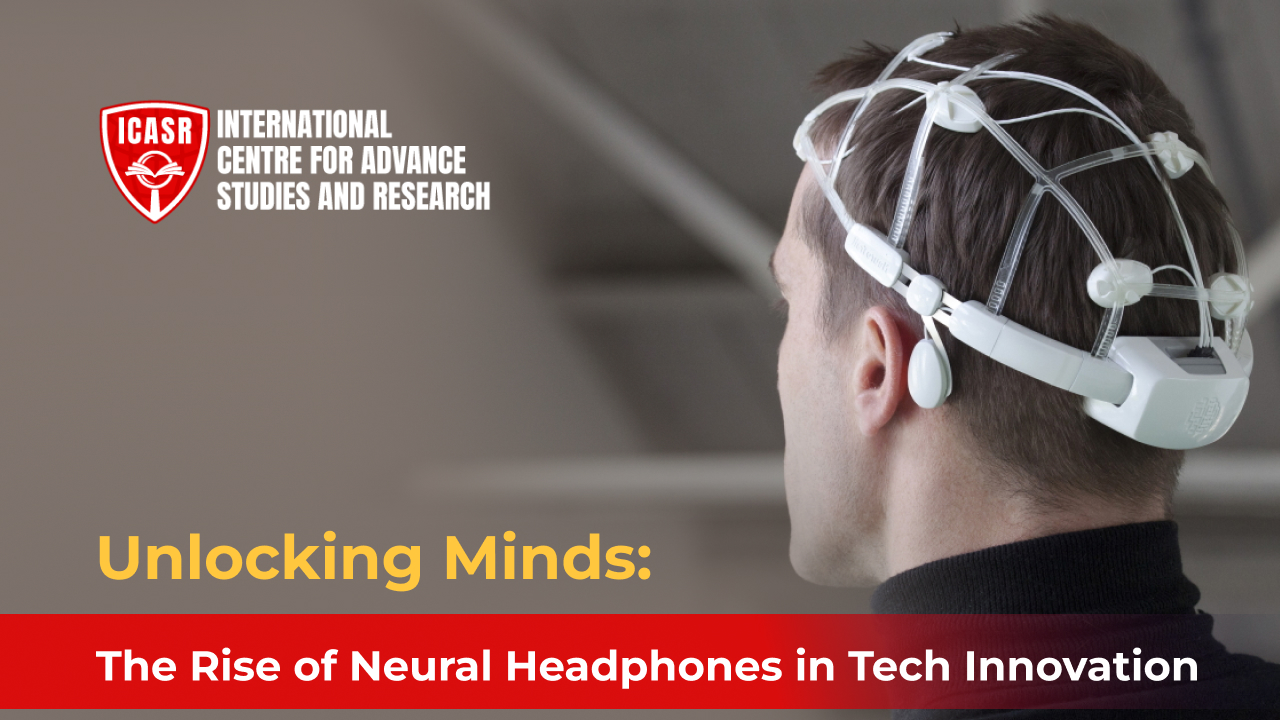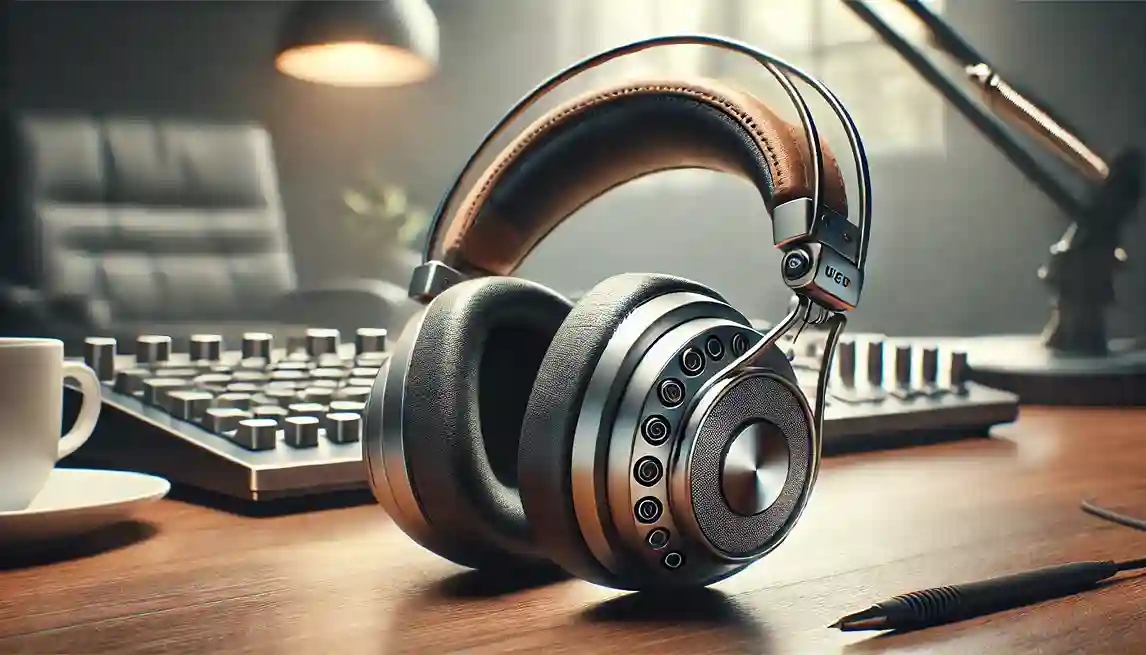The landscape of audio technology is undergoing a radical transformation, propelled by the emergence of neural headphones. These aren't merely high-fidelity sound devices; they represent a convergence of neuroscience and audio engineering, promising to redefine our interaction with sound. This article delves into the exciting world of neural audio advancements, examining how these devices are being developed, the potential applications, and the challenges that lie ahead.
Decoding Neural Headphones:
Neural headphones, also known as Brainwave audio devices or Mind-controlled headphones 2024, are one of the most advanced gadgets in technology today. Unlike normal earphones that depend upon external controls, these gadgets use brainwave functionality to understand the desires of their user while providing a customized aural experience.
The advanced neurotechnology is hidden inside neural headphones. Inside these headphones are electrodes that detect brain single through electroencephalography (EEG) sensors which are embedded within them and further race algorithms are utilized to comprehend user focus attention and emotions. The audio output of the music is manipulated e.g., creating the virtual environment or influencing other devices.
The Evolution of Neural Audio Advancement:
The path to neural headphones has undergone a great transformation in the field of neuroscience and audio technology. Initial investigations offered a basis for interpreting brainwaves and their possible utility. At present, leading companies in sound devices spearhead the development of such technologies.
- Bose Ear buds: Famous for providing sound of excellent quality, Bose has always introduced new features in their new earbuds. Although not entirely neural, they still symbolize change and set the stage for the future incorporation of neuroscience into hearing interfaces.
- Skullcandy Headphone: These headphones have been meant for youth culture and style, but their intended target was enhancing the listening experience with neuroscience elements. These comprise features which are focused on moods or activities, such as when different Candy Skulls are worn.
- Soundcore Headphones: This company is increasingly becoming known due to its low-cost, yet high-end headphones with numerous features embedded within them. Their combination of artificial intelligence (AI) with advanced audio processing may mean that someday they can go towards neural technologies.
How Neural Headphones Work:
An overview of brainwave technology is needed in order to make sense of how neural headphones work. The electrical activity produced by brain cells is detected by EEG sensors within the headphones. These singles which are usually called brainwaves differ based on the mental state of the user.
The EEG data is then analyzed using sophisticated algorithms to determine trends linked with various cognitive conditions like concentration, tranquillity or thrill. The recognition of such patterns enables adjustment of the headphones' sound output. For instance, during high-intensity games, the bass might be boosted in order to feel more involved.
The Science Behind Neural Headphones:
The intersection of neuroscience and audio engineering is showcased in neural headphones that provide fascinating experiences. The science behind them is what will make one appreciate their abilities fully.
- Brainwave Patterns: Different mental states correlate with various brainwave patterns. For instance, alpha waves have been connected to relaxation while while beta waves are associated with focus and concentration. Neural headphones can be programmed to detect these wave patterns so as to adjust the soundscape accordingly.
- EEG Technology: The electric brain activities are measured using a method called Electroencephalography (EEG). Subsequently, neural headphones employ EEG sensors placed on the scalp that capture voltage oscillations giving meaningful information for analysis purposes.
- Algorithms Development: Complex algorithms for interpretation of EEG data and making necessary audio adjustments. In time these equations get perfected through machine learning.
Mind-Controlled Headphones 2024: A Glimpse into the Future
A few years still remain to truly understand headphones with brain control since technology has not fully developed it yet, although breakthroughs occur day by day when it comes to this sector. The use of brainwaves is being studied by scientists and equipment manufacturers, aiming at changing sounds' playtime out or period through brain measurements.
Imagine bringing an end to any song you did not like at will, even if on air. That means moving from one CD track (tape) straight into another without moving any cursor pointer on the computer screen. Or lifting spirits with a response; the subject turns their attention back and the sound bank falls so dry, leaving the silent room; rising voices show how stiff-necked life can be. These capabilities are now achievable and they do not belong any more to science fiction films.
Challenges and Future Directions:
Even though they have a lot of potential, the making of neural earphones is not easy. This is due to the fact that data privacy and security need to be taken into account because these machines receive quite sensitive brainwave information from users. Furthermore, addressing the ethical issue regarding mind control and manipulation is equally important.
The accuracy of brainwave interpretation is another ongoing challenge that needs to be refined continuously. The research is doing research on new artificial intelligence algorithms trying to improve this, and there is still room for growth.
Despite these obstacles though, we remain positive about the future of neural headphones. Technology will keep moving forward, and hence we should expect even more complex devices than before. Moreover, one can expect real-life experience through interaction with augmented reality or virtual reality environments in such products. In addition to that, one would find these devices more practical for everyday use as battery life and comfort continue to develop.
Conclusion:
The rise of neural headphones marks a turning point in the history of how humans interact with computers. These devices minds and machines, changing our experience of life on this planet. Great challenges still exist, but so do great opportunities. Thus as additional research and experiments continue, we may see a time when neural headsets are just part of our day-to-day life, a boost for our well-being, productivity and pleasure.
We are just at the beginning of what might be called the neural audio advancement of earphones. Nevertheless, there has been an undeniable sense of excitement around recent developments. Long-term moving forward practitioners can expect an indistinct future of concerning people's thoughts with the technology resulting in unimaginable capabilities.


